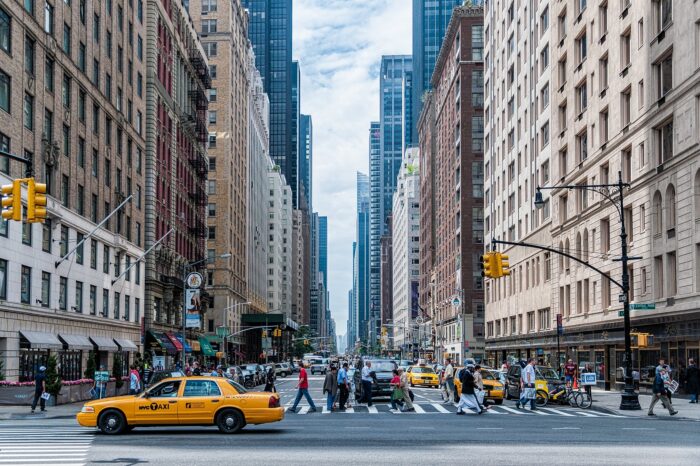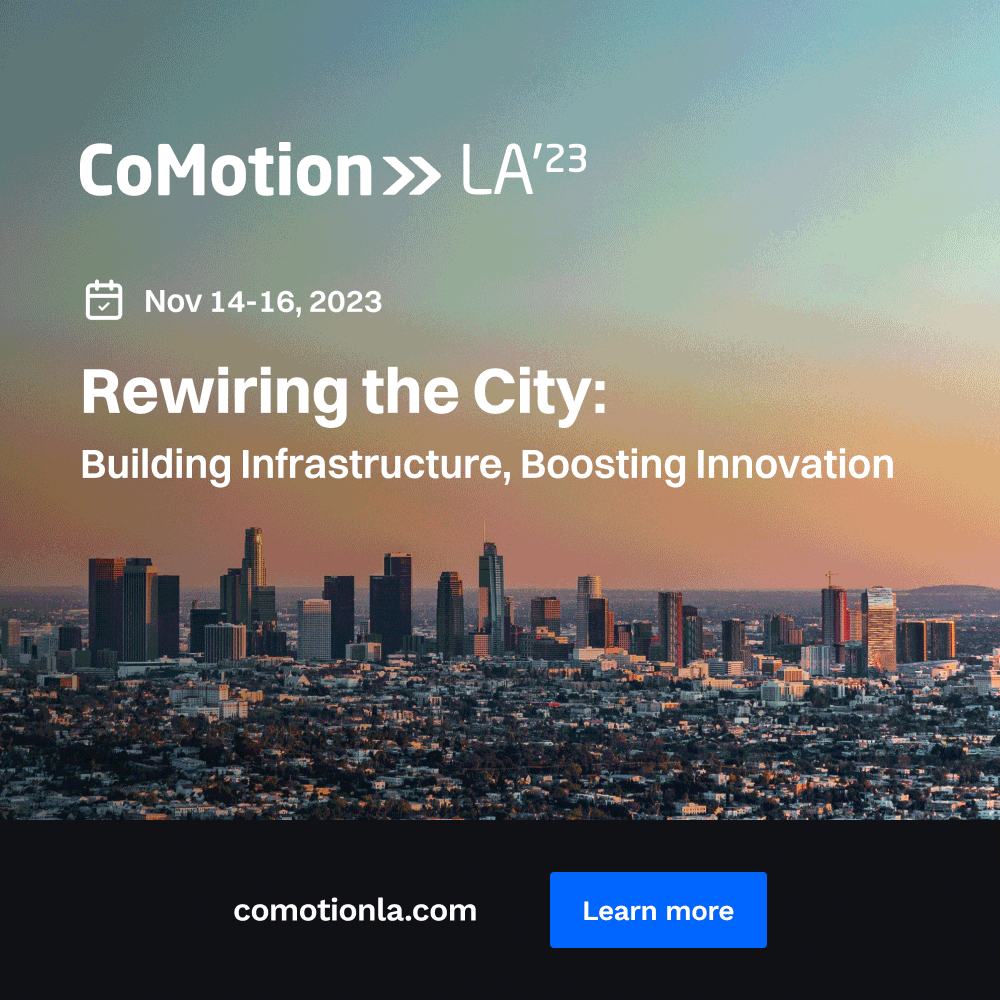The Next Sustainable Mobility Revolution: Maritime

By Andrew Snowhite, Chief Strategy & Sustainability Officer, Snowhite Strategies
The mobility revolution has primarily taken place on our roadways and in the skies; however, there is massive opportunity for it to positively impact our ocean and waterways too. This is reflected in potential business innovations, job creation, lower carbon emissions, less pollution, and enhanced human health.
Why? Maritime trade accounts for almost 90% of global goods and is projected to triple by 2050. In the United States, ships move almost 70% of the country’s international freight trade. Over 40% of the world’s population lives within 100km of a coastline, a percentage that will continue to grow. And most megacities are located on the coast. Simply put, the future of transportation isn’t anchored beneath, but upon the waves.
Innovative companies and cities already are testing and implementing new strategies and technologies to meet market needs and a booming population, while also aiding in the race toward net zero.
This is also true for the world’s new coastal cities, where it is imperative that sustainable maritime strategies and infrastructure are included from inception. Perhaps the most ambitious example of the energy transition and maritime mobility is NEOM, in Saudi Arabia. The US$500B coastal project covers an area over 25,000 km2 and aims to be the smart and sustainable economic region of the future, driven by clean energy (more on NEOM below).
Following are highlights of the key trends being explored and implemented in the marketplace.
The Energy Transition
Like most industries, maritime mobility is being affected broadly by the energy transition. This is happening in the form of organizational net zero commitments, reactions to new or potential regulations, shifting risk models, novel sources of capital, and entrepreneurial disruptors.
Industry leaders recognize the impact. Maritime shipping is responsible for about 3% of global greenhouse gas emissions each year, at least on par if not higher than airlines. That’s in addition to various other harmful emissions produced like sulfur and nitrogen oxides (9% and 18%, respectively). Consequently, in 2018 the International Maritime Organization set the goal to cut greenhouse gas emissions by 50% by 2050, relative to a 2008 baseline.
Two of the most exciting and promising aspects of the energy transition are electrification and green hydrogen.
Similar to cars, all-electric or hybrid engines can power ships while producing lower or zero emissions. However, this requires large scale batteries as well as widespread charging infrastructure, especially for long haul voyages. Already, in Norway, the all-electric ferry Basto Electric is running multiple electrified ships across Oslo Fjord, the country’s busiest crossing. The Washington State Ferries, which operates the largest ferry system in the United States, is in the process of transitioning to an emission-free fleet through a hybrid electric system (building new vessels, converting old vessels, and electrifying terminals).
Green hydrogen, or hydrogen fuel that is produced using renewable energy, is extremely exciting due to its potential industrial scalability and cost-effectiveness. Like electrified ships, it will require new infrastructure and either new engines or retrofitted vessels. Incremental steps are being taken as well, such as Hyundai Motors designing small yachts fully powered by their hydrogen fuels cells. On a larger scale, MSC Cruises is starting to partially integrate hydrogen-fuels into their Explora Journeys branded cruise shops, as is Viking Cruises.
And it’s not only the fuel that a ship is using while at sail that needs to be considered, but the time it’s docked and the associated infrastructure and operations. The Port of Miami has committed to adding additional shore power hookups for cruise ships to utilize while docked, instead of relying on traditional diesel generators for power. It will be the first port on the east coast to allow multiple ships to plug in simultaneously. On the other side of North America, the Port of Vancouver offers up to a 75% discount on harbor dues for shipping lines that use shore power. To their south, the Port of Long Beach already is powering 17% of its cargo-handling equipment electrically (the largest fleet in the United States), on its way to a 100% emissions-free goal by 2030. And the Port of Los Angeles is utilizing hydrogen-powered fuel cell electric vehicles, and has multiple hydrogen fueling stations, as part of its Clean Air Action Plan.
These types of programs will be accelerated across America as ports are primed to receive billions of dollars in incentives and investments due to recently enacted legislation. The Inflation Reduction Act includes US$3B to reduce air pollution and advance zero-emissions technology in ports, which is in addition to the US$17B in the Infrastructure Investment and Jobs Act for upgrading ports and crucial waterways.
Greenfield Coastal Cities
The incredibly ambitious NEOM project (mentioned earlier) endeavors to integrate clean maritime mobility at scale via the NEOM Green Hydrogen Company. It plans to do so by capitalizing on the country’s low-cost hydrogen resources and renewable capacity (specifically wind and solar). Not only is it preparing to begin producing green hydrogen at scale from 100% renewable sources by 2026, but also it will be based in a floating city called Oxagon that features a port and logistics network for global distribution (more on Oxagon below).
Technology Facilitated Innovations
Many of the technology innovations impacting other industries are being adapted to maritime mobility as well, resulting in increased efficiency, lower environmental impacts, job creation, and new business models.
Artificial intelligence (AI) is facilitating route planning, driving dynamic pricing, and powering autonomous vehicles. Automated planning at ports streamlines loading and offloading, reduces the risk of human error, and speeds up scheduling and rescheduling. In 2022, a fully autonomous ship developed by IBM called The Mayflower crossed the Atlantic. And it’s not only big tech that’s innovating. For example, the Hong Kong startup Clearbot is developing AI-powered electric and self-driving boats for pollution recovery, surveillance, and cargo delivery.
Another startup that’s received considerable attention is The Ocean Cleanup. Its mission is to tackle marine pollution using technology that captures plastics, which costs the world an estimated US$6-19B per year. Not only is it capturing plastic, but through a partnership with Kia, it also plans to provide plastic that will be used in the car company’s production process. Other car companies are employing similar circular economy strategies. Both BMW and Ford have announced plans to use recycled fishing nets in future EVs (BMW’s NEUE KLASSE EVs and the Ford Bronco Sport). Other startups are tackling plastic pollution from the source, such as ENSO that is developing tires for EVs that reduce tire plastic pollution and reduce carbon emissions (ENSO won CoMotion’s 2021 L.A. New Mobility Challenge).
A variety of other new mobility technologies are being adapted to marine transport as well. Similar to bicycle or scooter micromobility sharing companies, PADL is a Florida platform that facilitates self-service paddleboard and kayak rentals. And for the NetJets crowd, U-Boat Worx offers shared ownership for personal submarines!
Floating Cities and Residences
Humans have long dreamt of living at sea, or even under the sea. Aside from a few underwater hotels and restaurants, we remain far away from permanent underwater dwellings. However, the idea of building fixed or mobile houses or developments at sea, is starting to become a reality.
This includes the progression from cruise ships as short-term vacation dwellings to offering permanent residences, like the MV Narrative that’s set to launch in 2025. Billing itself as “the world’s first environmentally sustainable private residence ship,” it is slated to have 547 private residences and an estimated US$1.5B in sales. The idea of houseboats is being reimagined as it relates to climate change and resiliency too. In 2019, London-based architect Wojciech Morsztyn designed an award winning ocean-home concept called Ocean Community, a “future mobility vision to deal with rising sea levels.”
And as noted earlier, Oxagon at NEOM is envisioned as a fully automated next-generation port. Upon completion it would be the largest floating structure in the world, powered by clean energy and housing almost 100,000 people.
Looking Forward
The maritime mobility revolution has massive potential for positive environmental and economic impact. Decarbonizing ships and ports significantly contributes to local and global net zero commitments, while also improving human health (including the 40 million Americans that live within three miles of a port). The development and implementation of new technologies coupled with widescale retrofitting will create a wide variety of jobs. And new funding will drive innovation and investment in smart and sustainable developments and operations.
Keep your eyes on the sky…but don’t forget the waves.



